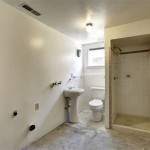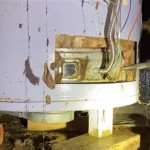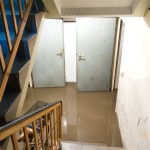Pumps For Flooded Basements
A flooded basement is a homeowner's worst nightmare. Not only can it cause extensive damage to your home and belongings, but it can also be a health hazard. Standing water can breed mold and mildew, which can trigger allergies and asthma. If you live in an area that is prone to flooding, it is important to have a plan in place to deal with a flooded basement.
One of the most important things you can do is to install a sump pump. A sump pump is a device that is installed in the lowest part of your basement. It works by pumping water out of the basement and into a drain or storm sewer. Sump pumps come in a variety of sizes and capacities, so it is important to choose one that is right for your needs.
If your basement is already flooded, there are a few things you can do to mitigate the damage. First, turn off the power to your basement. This will prevent any electrical fires from starting. Next, remove as much water as possible using a wet/dry vacuum or a bucket and mop. Once the water has been removed, you can begin to clean up the damage. Be sure to wear gloves and a mask to protect yourself from mold and mildew.
If you have a flooded basement, it is important to act quickly to prevent further damage. By installing a sump pump and taking steps to mitigate the damage, you can help to protect your home and belongings.
Types of Sump Pumps
There are two main types of sump pumps: submersible and pedestal.
Submersible sump pumps are the most common type of sump pump. They are installed in the sump basin and are completely submerged in water. Submersible sump pumps are very efficient and can pump large volumes of water. However, they are also more expensive than pedestal sump pumps.
Pedestal sump pumps are installed outside of the sump basin. They are connected to the sump basin by a pipe. Pedestal sump pumps are less efficient than submersible sump pumps, but they are also less expensive. They are a good option for smaller basements or for areas where there is limited space.
Choosing the Right Sump Pump for Your Needs
When choosing a sump pump, it is important to consider the following factors:
- The size of your basement
- The amount of water that your basement is likely to flood
- The type of sump basin you have
- Your budget
Once you have considered these factors, you can choose the right sump pump for your needs.
Installing a Sump Pump
Installing a sump pump is a job that is best left to a professional. However, if you are confident in your DIY skills, you can install a sump pump yourself. Here are the steps involved in installing a sump pump:
- Choose a location for the sump pump. The sump pump should be installed in the lowest part of your basement.
- Dig a hole for the sump basin. The hole should be at least 18 inches deep and 12 inches wide.
- Place the sump basin in the hole and level it.
- Connect the sump pump to the sump basin.
- Connect the sump pump to a drain or storm sewer.
- Test the sump pump to make sure it is working properly.
Maintaining Your Sump Pump
Once your sump pump is installed, it is important to maintain it properly. Here are a few tips for maintaining your sump pump:
- Check the sump pump regularly to make sure it is working properly.
- Clean the sump basin regularly to remove any debris.
- Test the sump pump after any power outage.
- Replace the sump pump every 5-10 years.
By following these tips, you can help to ensure that your sump pump will be there to protect your home from flooding.

Stop Basements Flooding Flood Prevention Pumps Alarms Ecohome

Can You Drain Flooded Basement With A Sub Pump Tri Rent All

Sump Pump Installation And Repair O Bannon Plumbing Sewer

Best Pumps For Excess Water Flooding

How To Clean A Flooded Basement Reviews By Wirecutter

3 Reasons To Hire A Waterproofer And Not Plumber For Sump Pump Repair News Events Basement Systems Inc

Chase Your Problems Away With A Sump Pump Plumbing

Basement Waterproofing Flooded In Vernon Rockville Failed Sump Pump

Flooded Basement Cleanup Water Removal Sudbury Wayland Weston Concord Ma Nh

Sump Pump Failure Symptoms Causes Fixes Groundworks
See Also








